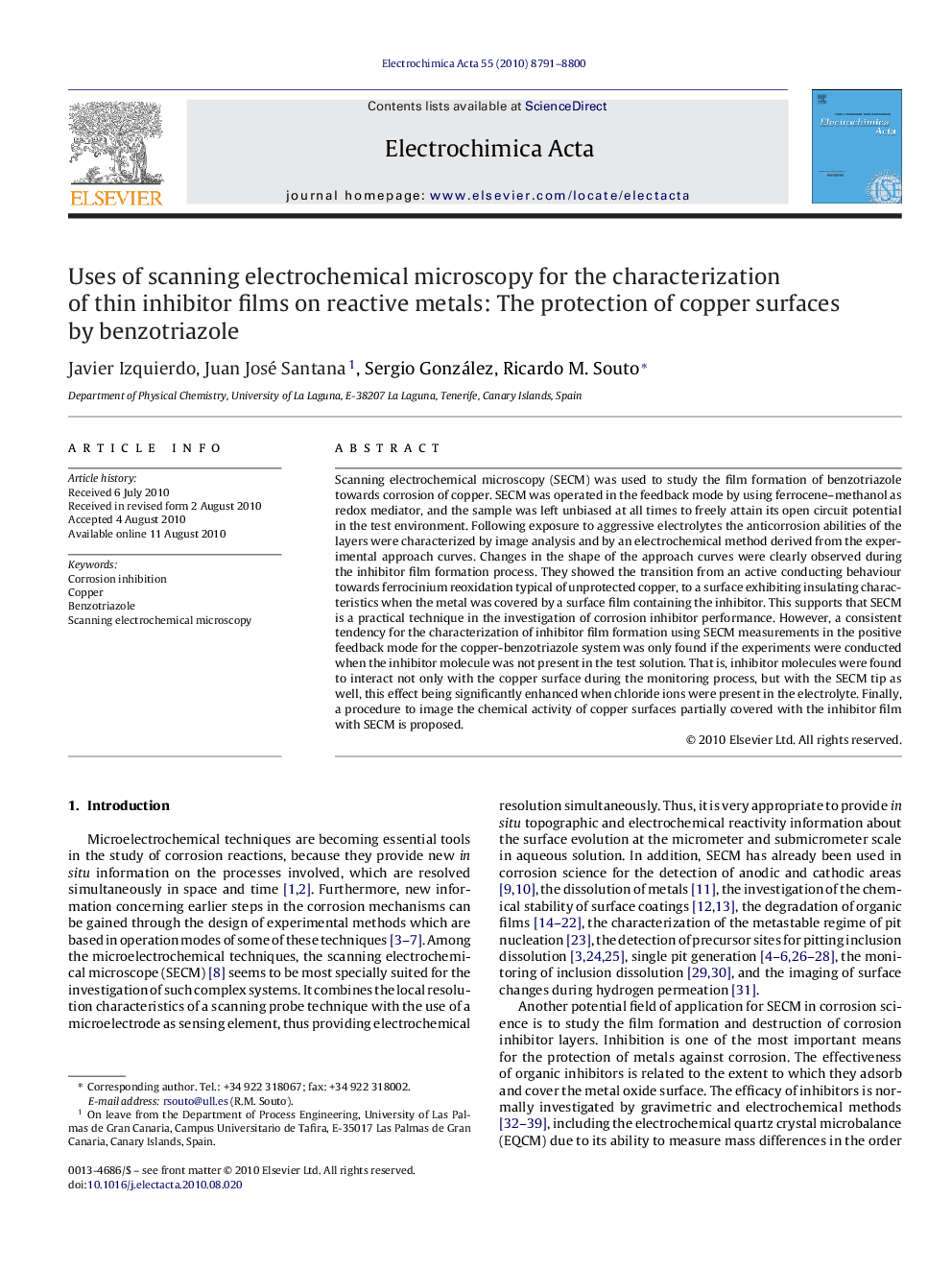| Article ID | Journal | Published Year | Pages | File Type |
|---|---|---|---|---|
| 190040 | Electrochimica Acta | 2010 | 10 Pages |
Scanning electrochemical microscopy (SECM) was used to study the film formation of benzotriazole towards corrosion of copper. SECM was operated in the feedback mode by using ferrocene–methanol as redox mediator, and the sample was left unbiased at all times to freely attain its open circuit potential in the test environment. Following exposure to aggressive electrolytes the anticorrosion abilities of the layers were characterized by image analysis and by an electrochemical method derived from the experimental approach curves. Changes in the shape of the approach curves were clearly observed during the inhibitor film formation process. They showed the transition from an active conducting behaviour towards ferrocinium reoxidation typical of unprotected copper, to a surface exhibiting insulating characteristics when the metal was covered by a surface film containing the inhibitor. This supports that SECM is a practical technique in the investigation of corrosion inhibitor performance. However, a consistent tendency for the characterization of inhibitor film formation using SECM measurements in the positive feedback mode for the copper-benzotriazole system was only found if the experiments were conducted when the inhibitor molecule was not present in the test solution. That is, inhibitor molecules were found to interact not only with the copper surface during the monitoring process, but with the SECM tip as well, this effect being significantly enhanced when chloride ions were present in the electrolyte. Finally, a procedure to image the chemical activity of copper surfaces partially covered with the inhibitor film with SECM is proposed.
